In 2021, John ‘D.J.’ DesJardin explained the visual effects work on Godzilla vs. Kong. He then returned to the DCU to work on The Flash.
What was your feeling to be back in this DC universe?
Although you might think it was a feeling of déjà vu – given the history I’ve had with this chapter of the DCU – it was more like a continuation. My VFX team and I had just come off wrapping Godzilla vs Kong from home (due to COVID lockdown), then went straight onto Zack Snyder’s Justice League (also done from home, also due to COVID lockdown). We actually did prep for The Flash while we were working on those two other films. It was a slow burn of a prep, since only so much could be done while shooting schedules and COVID protocols were being worked out. By the time we wrapped Zack Snyder’s Justice League, I had to jump on a mostly-empty flight to London to shoot The Flash at Leavesden barely a month after touching down in the UK. And since I’d been completing these familiar scenes of Ezra Miller as Flash in Zack’s Justice League from June of 2020 through February of 2021, then finding myself back on set with him in April of 2021, it was definitely a feeling that we were continuing his story from where we’d just left off.
How was the collaboration with the Director Andy Muschietti?
Andy is a very congenial, very focused and intense artist. I found him to be extremely nice and engaging, and ultimately collaborative. His collaborative nature is there to extract his vision from you. Which is interesting. He is a great pen to paper artist. He can sketch any concept, communicating quickly what he’s looking for.
When I was asked to talk to Andy and Barbara Muschietti and producer Michael Disco about working on Flash, my first instinct was no. I was on the verge of working on Zack Snyder’s Justice League, which hadn’t begun, but was imminent. I knew that would be a cathartic project for me, I had to be a part of it with Zack & Debbie Snyder.
The combination of the Flash script I read before meeting him and his enthusiasm for not only this project but what I’d brought to Zack’s projects in the past are what led me to accept Andy’s invitation to be a part of his movie.
It was a long and difficult road to getting this movie done. But we had a great rapport, definitely sharing friendship and a commitment to fulfilling his vision for the character and the movie.
What was his approach about the visual effects?
Andy has had a lot of experience with VFX on his previous projects. Sometimes that knowledge can limit or constrain a director’s ideas for what is possible with their project. But Andy had large ideas for this movie. He let his imagination run wild. He was also receptive to his VFX team’s recommendations for how we could best get his vision on to the screen.
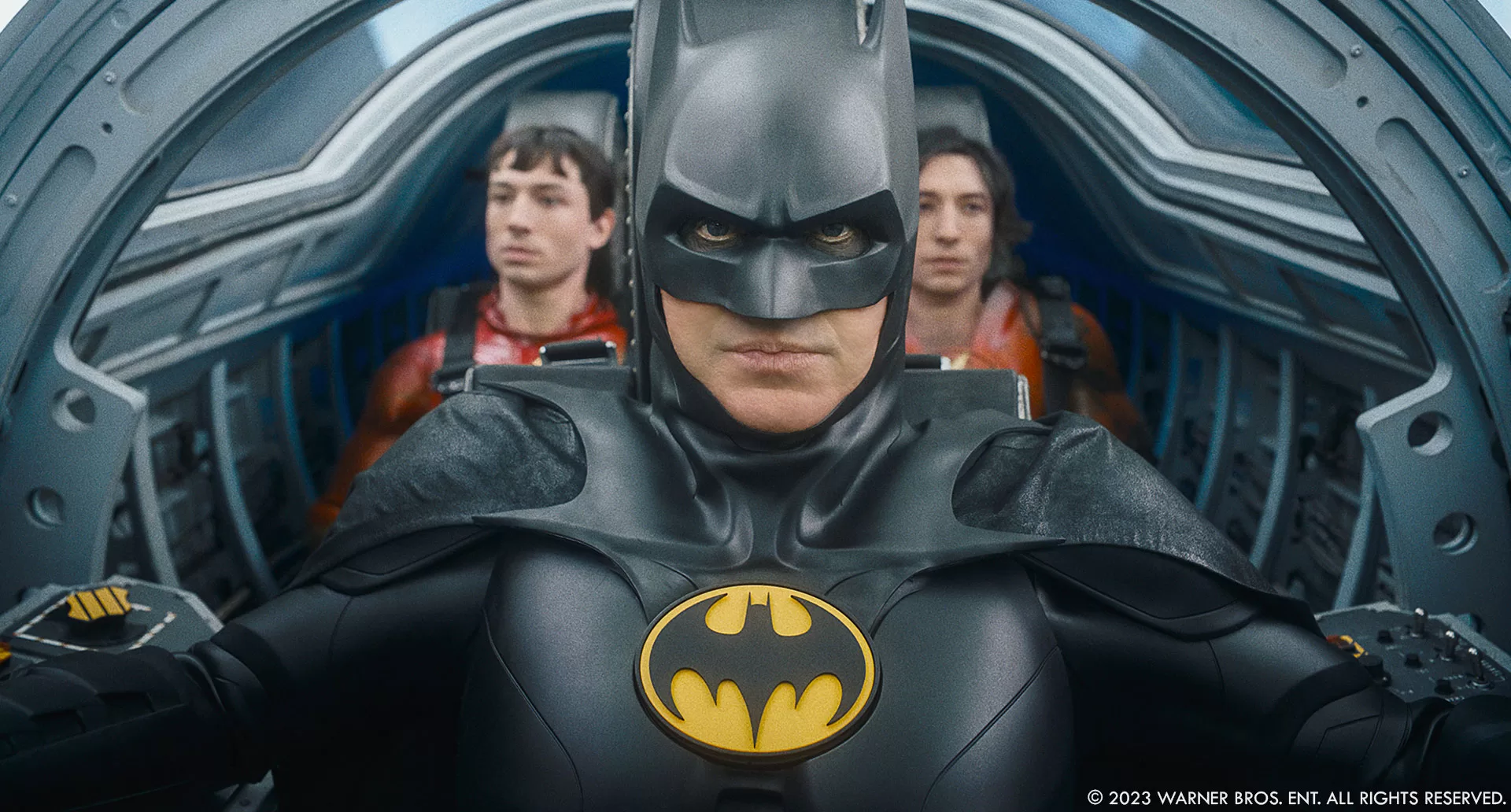
How did you organize the work your VFX Producer?
I continued to team with my producer Tamara Kent, and our associate producers Zack Fox and Amy Altvater. Our pre-production overlapped completion of Zack Snyder’s Justice League for a few months, so Tamara and I started our previs supervisor Kyle Robinson working with Andy to flesh out the major set pieces early on.
By March of 2021, Zack Fox and I were in London for the shoot. Tamara stayed in LA to work with WB to hone the schedule and budget. Zack Fox in particular maintained a constant data stream back to Tamara as the project grew and took its final shooting shape at Leavesden.
How did you choose the various vendors?
Being a creature of habit, I continued to work with facilities I have long standing relationships with. The major facilities on this show were Scanline VFX, Weta FX, DNEG and Eyeline. Along the way we added Rising Sun Pictures, Crafty Apes, Barnstorm VFX and Cubica.
I discussed the breakup of the work first with Bryan Hirota, making sure he was comfortable with what I thought he’d be helming for this show. Then I worked with Tamara and Zack Fox to make sure we were distributing the scenes fairly amongst Weta FX and DNEG. The rest grew to the other facilities once the major set pieces were in place.
Can you tell us how you split the work amongst the vendors?
Scanline developed the Speed Force look for Zack Snyder’s Justice League, so they continued to build on that for the Baby Rescue sequence. Their main new challenge was to develop the Chronobowl concept through all its phases, including the multiverse superhero cameos at the end of the film.
Weta resurrected their tech from Krypton to revisit the Edwards Airforce Base showdown between Zod and the Army which results in a war between humans and Kryptonians.
Eyeline provided performance based CG for both the Chronobowl and the Twin Barrys.
DNEG created many varied assets and environments: The Batcave (plus BATS); The Batwing; Siberia exterior and interior extensions; Wayne Manor exteriors; the Metropolis Event from Man of Steel revisited; and the Speed Force look of the supermarket sequences featuring Barry with his mother.
How did you work with the various VFX Supervisors and especially with Bryan Hirota?
Bryan Hirota and I have worked together for nearly 30 years(!). On this film, we teamed up more closely to solve some of the larger problems more directly together. We shared pre-production and were both in London during the shoot which was great because these production situations start to sprawl, so we were able to divide and conquer the set supervision end of things. Once we got into post production, Bryan focused primarily on his Scanline sequences. But he was always available to analyze unique problems with me as they came up. I was very happy to have his expert input into all aspects of the show.
Kevin Smith (Weta) and I worked together on Godzilla vs Kong and Zack Snyder’s Justice League. We had developed a short hand over these projects so it was easy from my end to discuss resurrecting many Weta assets from Man of Steel to recreate the First Contact moment from that film, and take it to a consequential level. Kevin and his team are always amazing at large scale, very detailed effects work.
That scene was no easy feat, but they crafted a battle plan that Andy could use as a foundation for the story points he needed to make.
I had never worked with Andy Lockley (DNEG) before, but his reputation on many Christopher Nolan films preceded him. Andy was amazing, had many good ideas, and he loved being on set which is good because he was tied to the Batcave for a long while (laughs again). Andy had to leave toward the end of the project and Tom Proctor took over. Tom and I have worked together for years, so that was an easy transition and he brought the DNEG sequences home in stellar fashion.
Can you tell us more about the previs and virtual production processes?
Kyle Robinson has been my previs supervisor on many shows in the past. We got him involved very early on to establish a productive working relationship with Andy Muschietti during pre-production, especially since we were still wrapping up work on Zack’s Justice League. Andy had already drawn early concepts of the Chronobowl and what would become the Chronoball multiverse ideas. Bryan Hirota had Scanline doing various concept art and animation tests that were also given to Kyle so he could get them into previs animatable form.
I think the main previs effort by the end of 2020 was the Baby Rescue sequence — more commonly referred to as the “Baby Shower” sequence. Kyle worked on that forever! But it was such a monster set piece at the start of the film, it really needed fleshing out to include many of Andy’s ideas for the detailed beats. That dovetailed into the Gotham City Chase which would ultimately feature our huge virtual Gotham City. Kyle was in London with Bryan and the rest of my VFX production team. Kyle and his team (many of whom were working from home, during those COVID times) were on the show throughout production and for about the first third of post production, sharing third act development with Weta. Eventually the show entered a phase where we had to move away from post-vis and finish the development process with the actual facility teams designated to finish the show.
Can you explain in detail about the creation of Flash running super fast and the slow-motion sequences?
Flash running generally comes in two forms: Running in Real Time, or running within the Speed Force. We’d done versions of both in ZSJL (short for Zack Snyder’s Justice League). We built upon those effects in The Flash.
The elements that make up the look of Real Time running are Lightning (blue if they’re not in their new costume, yellow if they are); refraction; smoke/steam/ozone from the lightning and slight air friction; sparks. If you’re in the Speed Force the list becomes Slow Motion Lightning (again, blue = no costume, yellow = new costume); refraction; slow motion sparks; chromatic abberations and flares.
Real Time running on set is accomplished via flashing interactive lights, wind and Ezra doing a landing or leaving action. Anything in between is achieved with a CG Flash. Speed Force motion is accomplished via slightly high speed photography (we usually shot Ezra at 48 fps unless they were delivering a line); fading-up and -down interactive lights to mimic very slow motion lightning all over the set; slight wind on Ezra or their local area which in the supermarket included their mother’s hair; extras in the set acting motionless.
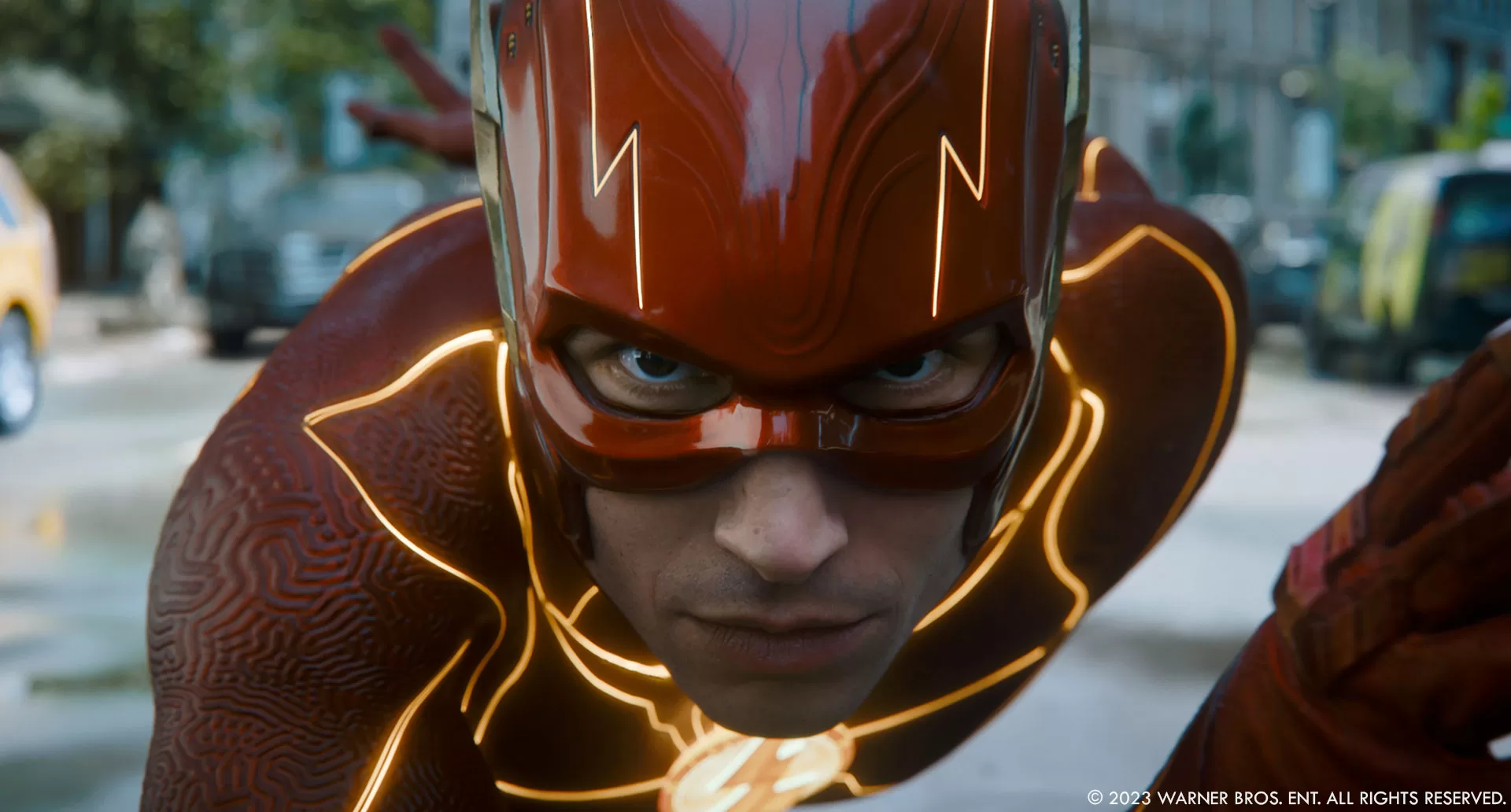
What was your approach to create the two Flash?
Very early on in pre-production, Bryan Hirota and I discussed with Andy the various interactions Ezra was going to have with themselves throughout the story. We also discussed with Andy and his Director of
Photography Henry Braham what the general camera style was going to be. Henry and Andy wanted to use Henry’s portable gyro-stabilized Nano camera system with wide angle lenses to get most of the twin character drama. This meant we needed to find a method that would allow ultimate freedom for Henry and Andy to move around without constraint from take to take. Which basically meant no split screens or motion control.
Our solution was stumbled upon while visiting the head of Scanline, Stephan Trojansky, who wanted to show us a COVID-friendly production flow based at his Eyeline LED stage in Culver City. Bryan and I noticed that he populated his realtime CG backgrounds with multiple versions of himself. When we asked how he did that, he took us to a small egg-shaped space surrounded with LED screens and over a hundred cameras pointing at the center. That was his Volume Capture space, where he would perform various actions while being captured by the cameras at 24 fps. This process created a unique 3D CG database of whomever was performing in the space for each frame. What you got was a full performance that could be placed into a scene basically wherever you wanted it. It was also able to be lit to fit into that scene.
We tested the technique on our First AD Michael Lerman. It was successful enough that we all decided that we would use this for two main effects: Twinning Ezra and all of the performances in the Chronobowl.
Before we could shoot, we needed to establish a way for Ezra to act as one twin against someone playing the other twin. This person was Ed Wade, who was Ezra’s acting double throughout the film. Ed wore a scorpion camera rig under his wardrobe which positioned a 360 degree reference camera just over his head. This was used to capture his position in the various sets and locations, also his relation to Ezra in those places, as well as Henry’s lighting. This reference was played back in the Volume Capture space which allowed Ezra to perform as their own twin while being lit by the recorded set lighting from the LED screens around them. It also allowed them to perform with themself, as they could see their performance on the LED screens. Ezra could literally act against themselves.
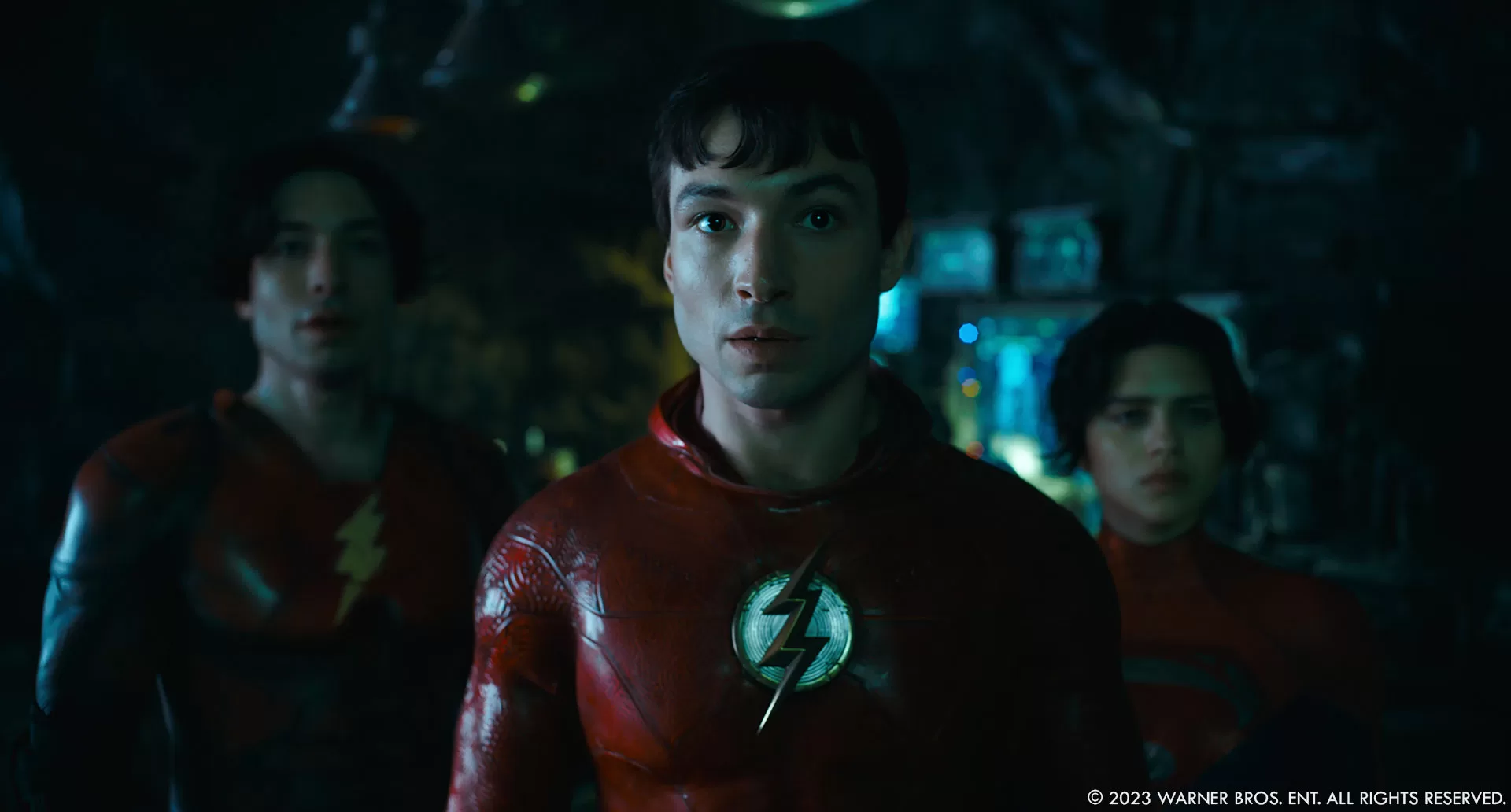
Can you elaborates about the design and creation of the Chronobowl?
The Chronobowl is one of Andy Muschietti’s earliest concepts. He gave Bryan Hirota and me many drawings early on as suggestions of what this construct might be. Bryan took the lead with his artists back at Scanline and worked to provide 2D art and 3D animation that would bring clarity to this oft times difficult concept. Over a long period of time and throughout the shoot, we developed all of the phases of the Chronobowl and all of the aspects intrinsic to it. How the rows moved. How the performances played as slow motion memories. Where the lighting inside the “stadium” came from. Andy insisted that the point of view of the memories always pointed to the center, where Flash is positioned. He also dictated exactly what all of the memories should be, how they related to what we’d seen – or did not see – in the film already.
This led to a massive Volume Capture list of actors recreating some moments from the film, but also moments not in the film. Lots of costume and makeup changes to generate performances only seen in Flash’s memory stadium. Very data-heavy.
Tricky question, which Batman is your favorite?
Not surprisingly, my favorite has to be Ben Affleck’s Bruce Wayne/Batman. That portrayal is the closest there’s ever been to my favorite comic book version, Frank Miller’s “The Dark Knight Returns” graphic novel from the late 1980s. It’s the version that returned the character to his mythical status. I would like to include a shout out to Richard Cetrone, the definitive Batman executing all of the incredible fighting and stunt work, the definitive look of the “The Dark Knight Returns” Batman, to this day.
Which sequence or shot was the most challenging?
Every sequence was hugely challenging on this film. Given how we digitized performances, how varied our environments and how layered our CG elements were, this is definitely the most data-heavy show I have ever worked on.
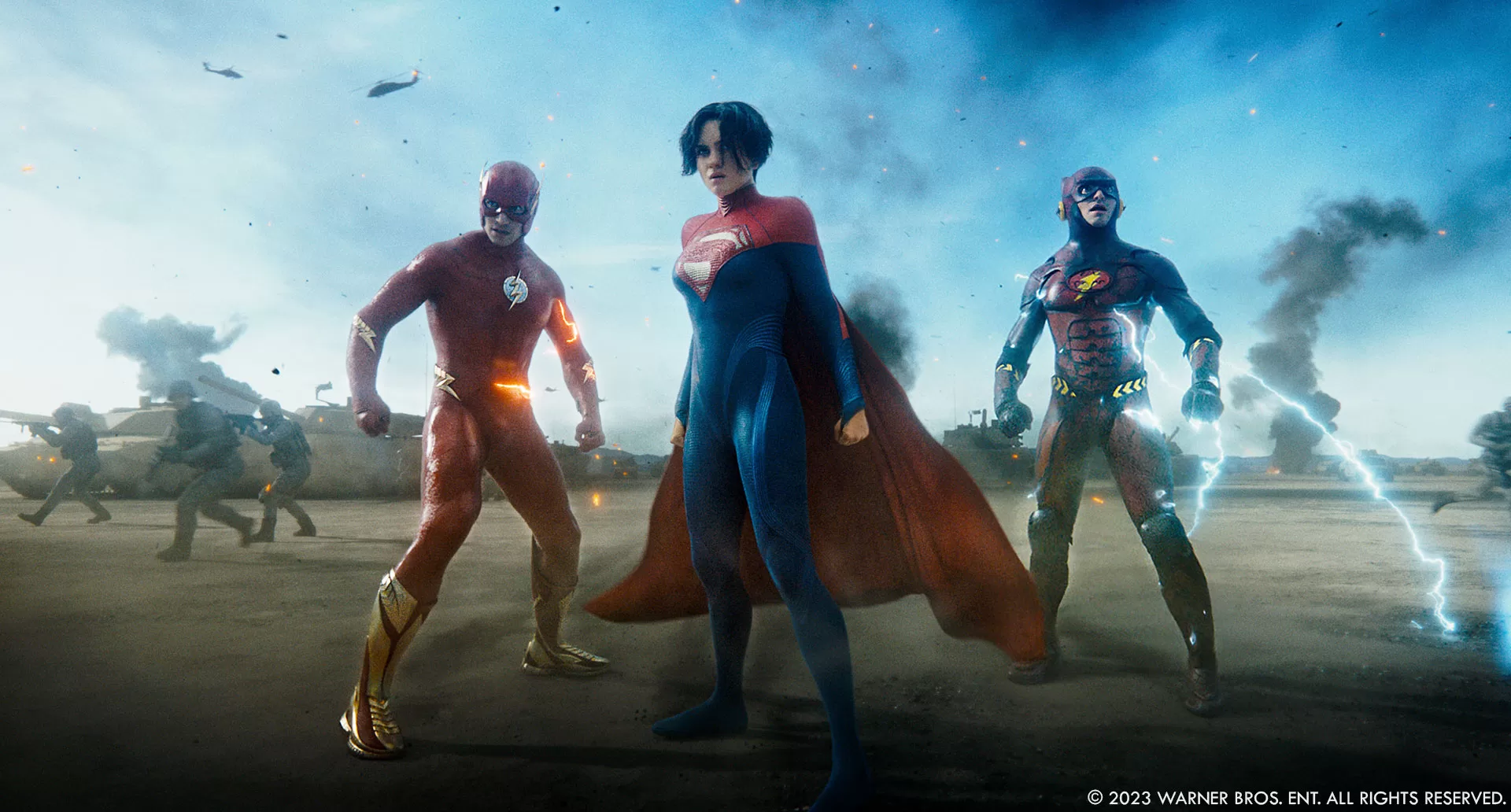
What is your best memory on this show?
I am very happy with the development of our Volume Capture pipeline to generate 3D performances for several types of effects. I also take away fond memories of a constantly creative atmosphere led by our director Andy Muschietti. And it was fun to work on an even more collaborative level with Bryan Hirota, something I hope to continue in the future.
How long have you worked on this show?
We started pre-production in earnest around November 2020. We delivered our final shots in April 2023.
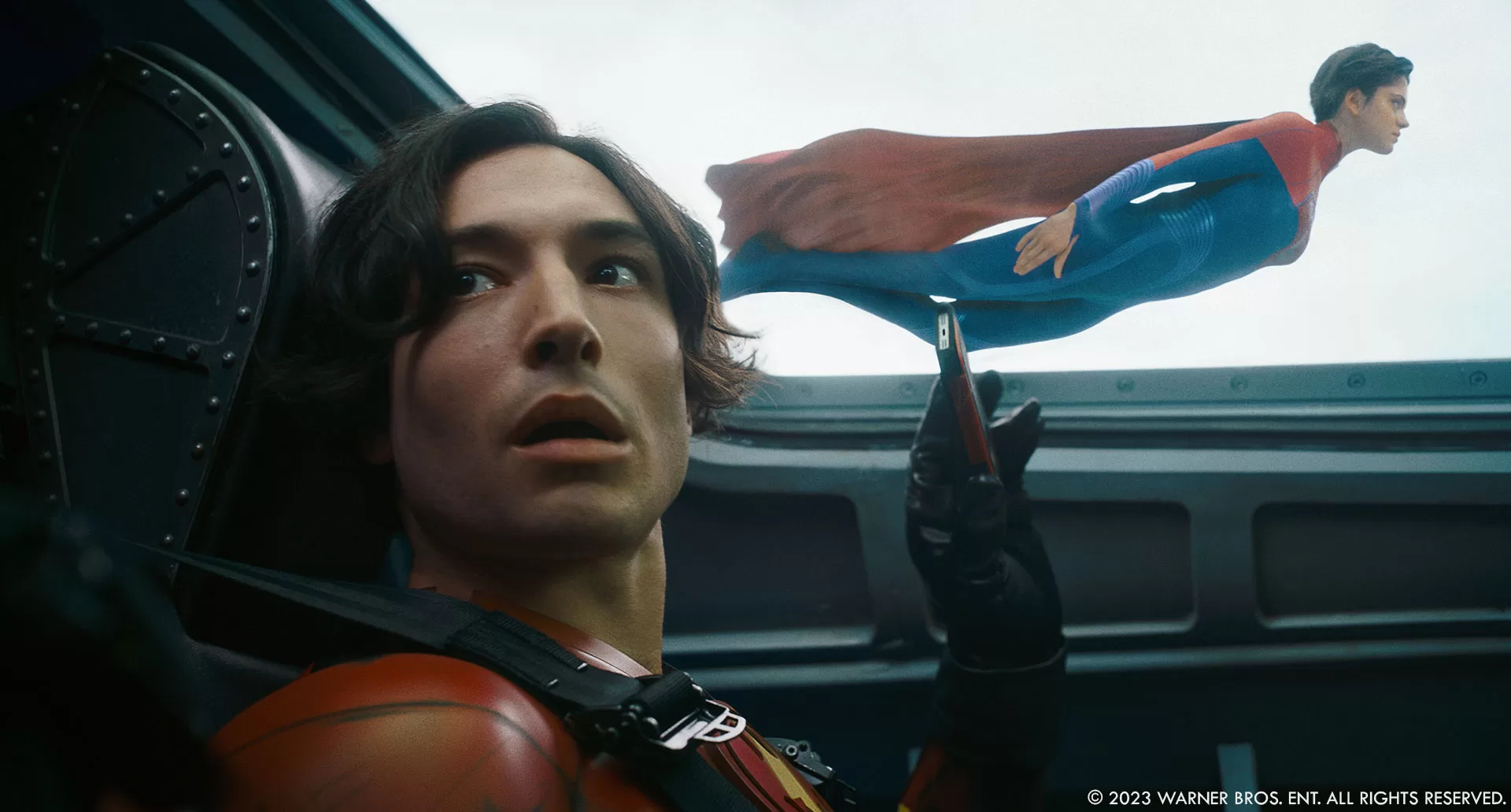
What’s the VFX shots count?
Over 2300 shots.
What is your next project?
I am back with Zack and Debbie Snyder, helping them finish Rebel Moon (Netflix).
A big thanks for your time.
WANT TO KNOW MORE?
DNEG: Dedicated page about The Flash on DNEG website.
Weta FX: Dedicated page about The Flash on Weta FX website.
© Vincent Frei – The Art of VFX – 2023





